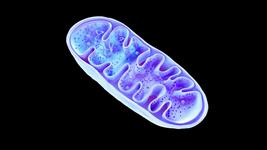CMN Weekly (27 September 2024) - Your Weekly CRISPR Medicine News
By: Karen O'Hanlon Cohrt - Sep. 27, 2024
Top picks
- Our sister publication CARBON made a comeback this week! The latest instalment of its newsletter brings you all the recent advances involving CRISPR and other gene-editing technologies in AgroBio. Check it out here.
- CMN Live: CRISPR next frontier: in vivo editing of the microbiome. Don't miss our live interview with Xavier Duportet (CEO, Eligo Bioscience) this Friday 27th of September. We'll be chatting about the human microbiome, its role in health and disease, and how gene editing within the microbiome will open a whole new chapter in medicine. See here for further details.
Research
- Researchers in the US report a potentially new therapeutic strategy for amyotrophic lateral sclerosis (ALS) and frontotemporal dementia (FTD). Using an optimised Cas13d-based RNA targeting system, they demonstrate significant in vitro and in vivo reduction of the RNA repeat mutations most commonly identified in patients with ALS or FTD. Their findings were published in The Journal of Clinical Investigation.
- In an article published in Nucleic Acids Research, a team in China reports FRAME, or flap endonuclease 1-engineered PAM module for precise and sensitive modulation of CRISPR/Cas12a trans-cleavage activity. They report that the FRAME strategy could 'kill two birds with one stone' since it not only precisely programmed Cas12a's activity but also simultaneously triggered isothermal cyclic amplification. When applied to construct a sensing platform for detecting myeloperoxidase and miR-155, FRAME demonstrated high sensitivity and specificity, and the team also demonstrates the potential of FRAME for multiplex detection without the need for redesign.
- Scientists in Germany introduce Chem-CRISPR/dCas9FCPF, which they propose as a new platform for chemically-induced epigenome editing. Their latest study builds upon their previous finding that Cas9 tagged with the Phe-Cys-Pro-Phe (FCPF)-peptide motif can be specifically targeted by perfluorobiphenyl (PFB) derivatives. Now, they have integrated the FCPF-tag into dCas9 to establish Chem-CRISPR/dCas9FCPF. They designed a series of chemical inhibitor-PFB conjugates targeting various epigenetic modulator proteins, and focusing on the panBET inhibitor, JQ1, they show that c-MYC-sgRNA-guided JQ1-PFB specifically inhibits BRD4 in close proximity to the c-MYC promoter/enhancer, thereby effectively repressing the intricate transcription networks orchestrated by c-MYC as compared with JQ1 alone. Their findings were published this week in Nucleic Acids Research.
- Transposon (IS200/IS605)-encoded TnpB proteins are predecessors of Class 2 type V CRISPR effectors and have emerged as one of the most compact genome editors to date. In a recent study, researchers in Switzerland and Germany optimised the design of Deinococcus radiodurans (ISDra2) TnpB for genome editing in mammalian cells (TnpBmax), leading to an average 4.4-fold improvement in editing. By analysing targeting efficiency of TnpBmax at 10,211 target sites, the team generated a large dataset that allowed them to establish editing rules from which they created a deep learning model to predict guiding RNA activity. This deep learning model, which they call termed TnpB editing efficiency predictor or TEEP is available online here, and is capable of predicting ISDra2 TnpB guiding RNA (ωRNA) activity with high performance (r > 0.8). The findings were published this week in Nature Methods.
- CRISPR-Cas13X is the most compact nuclease in the Cas13 family, and the development of high-fidelity Cas13X (hfCas13X) variants has enhanced its safety profile for in vivo applications, albeit with a notable reduction in on-target cleavage efficiency. In an article published yesterday in FEBS Letters, scientists in China report two engineered crRNA mutants that notably enhance the on-target cleavage efficiency of hfCas13X. They also report the identification of a novel crRNA structure that consistently improves the on-target cleavage efficiency of hfCas13X across various cellular environments, without a significant increase in collateral activity.
Industry
- HuidaGene Therapeutics presented late-breaking data yesterday at World Muscle Society 2024 demonstrating promising pre-clinical data for its HG302 CRISPR/hfCas12Max DNA-editing therapy for Duchenne muscular dystrophy (DMD). Among the data highlights were that systemic delivery of HG302 in humanised DMD mice efficiently restored dystrophin expression and rescued motor function to wild-type levels, and HG302 induced therapeutically acceptable editing efficiency at the exon 51 splice-donor site in non-human primates with no observed drug-related toxicity. More details on the data can be found in a press release published by HuidaGene.
- KSQ Therapeutics announced this week that the FDA has cleared its IND application for KSQ-004EX, a CRISPR-Cas9 engineered tumour-infiltrating lymphocyte (TIL) therapeutic candidate. KSQ-004EX consists of TIL in which the SOCS1 and Regnase-1 are inactivated using CRISPR-Cas9 gene editing. KSQ previously identified SOCS1 and Regnase-1 as key regulators of anti-tumour potency and persistence of TIL in pre-clinical models, raising hopes for best-in-class potential for KSQ-004EX in the treatment of advanced solid tumour indications. See the official press release for further details.
- YolTech Therapeutics announced this week that the FDA has granted Orphan Drug Designation to YOLT-203 for the treatment of Primary Hyperoxaluria Type 1. Earlier this month, YOLT-203 received Rare Pediatric Disease Designation from the FDA, and last month the company announced that the first patients had been dosed. Read more about YOLT-203 in our recent clinical trial update here.
- Vertex taps Lonza to help produce global supply of cutting-edge CRISPR therapy Casgevy. This write-up in Fierce Pharma outlines an agreement between Vertex Pharmaceuticals and Lonza that aims to boost the global commercial supply of Casgevy. The CDMO Charles River Laboratories and RoslinCT (which is the contract manufacturing arm of the Roslin Institute) are also working with Vertex to ensure consistent supply of the first approved CRISPR therapy.
CRISPR screens
- A genome-wide arrayed CRISPR screen carried out by researchers in the US, Germany and France has identified the IFN-stimulated gene PLSCR1 as an intrinsic barrier to SARS-CoV-2 entry that recent virus variants have evolved to resist. They found that PLSCR1 did not require IFN induction to restrict SARS-CoV-2 and did not contribute to IFN signalling, but that instead, PLSCR1 specifically restricted spike-mediated SARS-CoV-2 entry. Following attempts to explore the functional effects of PLSCR1 variants present in humans, they discuss an association between PLSCR1 and severe COVID-19 reported recently. Their findings were published this week in PLOS Biology.
Detection
- Scientists in China report a novel biosensing platform that integrates CRISPR-Cas12a into a rolling circle amplification (RCA)-based DNA hydrogel. The hydrogel used in their workflow could pre-encapsulate diverse signal molecules comprising GelRed, methylene blue, and gold nanoparticles, which were released upon Cas12a-mediated cleavage. The team report that its design enabled customisable signal output, including fluorescence, electrochemistry, and colorimetry and demonstrated fast and specific detection of methicillin-resistant Staphylococcus aureus, with a mecA gene detection limit of 10 copies/μL. Their findings were published yesterday in Analytical Chemistry.
- A team in China has developed a series of innovative quantum dot (QD) reporters for CRISPR-Cas systems, which leverage the advantages of high photoluminescence quantum yield and large Stokes shifts of QDs and are also easily synthesised through a simple one-step hydrothermal method. Based on the trans-cleavage characteristics of Cas12a and Cas13a, two types of QD reporters were designed, the short DNA strand and the hybridisation-based QD reporters, achieving the detection of DNA and RNA at the pM level, respectively, and validating the performance in the analysis of clinical samples. The findings were published in Analytical Chemistry.
Reviews
- Molecular Therapeutics in Development to Treat Alzheimer's Disease. This review article discusses current and future perspectives on the treatment of Alzheimer's disease, with an emphasis on immunotherapeutic and gene therapeutic strategies, including those based on CRISPR-Cas, base editing and prime editing and findings from pre-clinical models.
- Impact of Chromatin Organization and Epigenetics on CRISPR-Cas and TALEN Genome Editing. Chromatin structure and epigenetic modifications affect the activity of genome editors because of the role they play in hierarchical organisation of the underlying DNA. Understanding how genome editors 'search' the genome and their molecular interactions with higher order chromatin will lead to improved models for predicting precise genome editing outcomes is discussed in this review article.
- Genome Editing Therapy for the Blood: Ex Vivo Success and In Vivo Prospects. This review looks at recent advances in therapeutic genome editing of haematopoietic stem cells and T cells, focusing on the progress in ex vivo contexts, the promise of improved access via in vivo delivery, as well as the ongoing pre-clinical efforts that may enable the transition from ex vivo to in vivo administration. The authors discuss the challenges, limitations, and future prospects of this rapidly developing field.
CRISPR patent news
- Two Nobel Prize winners want to cancel their own CRISPR patents in Europe. This piece in MIT Technology Review discusses the latest twist in the long-running CRISPR patent dispute. Lawyers for Nobel laureates Emmanuelle Charpentier and Jennifer Doudna have requested for two of their seminal European patents to be withdrawn. This news follows an opinion from a European technical appeals board in August, which ruled that the duo’s earliest patent filing didn’t explain CRISPR well enough for other scientists to use it and doesn’t count as a proper invention.
To get more CRISPR Medicine News delivered to your inbox, sign up to the free weekly CMN Newsletter here.
Tags
ArticleMissing linksNewsCMN WeeklyHuidaGene TherapeuticsKSQ TherapeuticsVertex Pharmaceuticals, Inc.YolTech Therapeutics
CLINICAL TRIALS
IND Enabling
Phase I
Phase II
Phase III
Recurrent or Progressive High-grade Glioma, (NCT06737146)
Sponsors:
Suzhou Maximum Bio-tech Co., Ltd.
Sponsors:
Suzhou Maximum Bio-tech Co., Ltd.
IND Enabling
Phase I
Phase II
Phase III
Advanced Peritoneal Malignancies or Abdominal Metastatic Solid Tumors, (NCT06912152)
Sponsors:
Zhejiang University
Sponsors:
Zhejiang University
IND Enabling
Phase I
Phase II
Phase III







